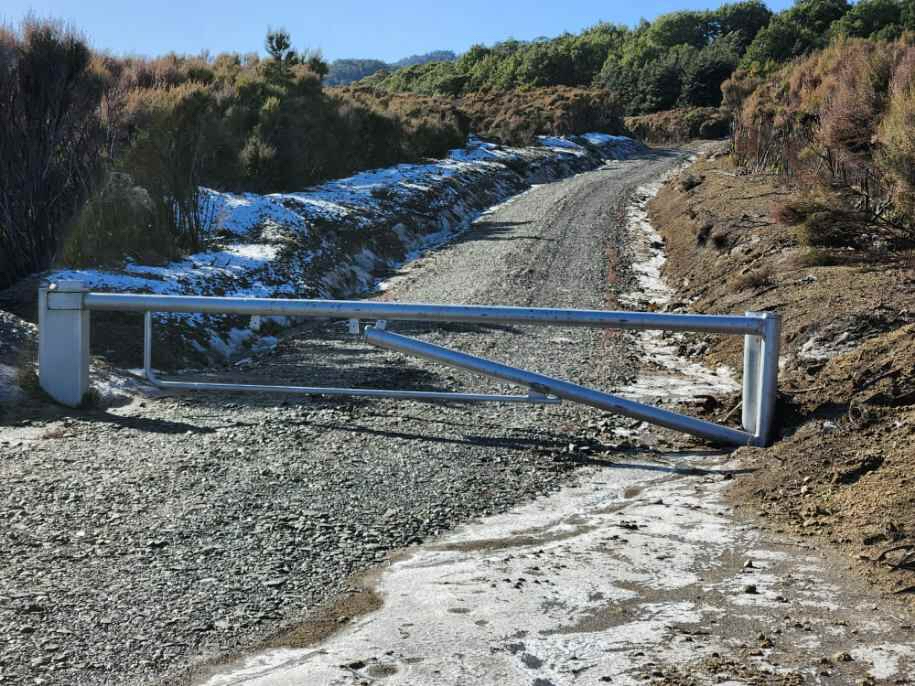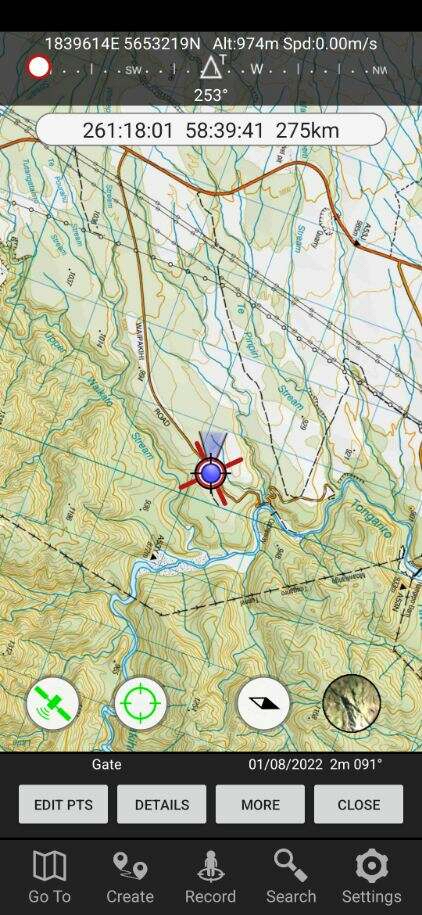And the NZED spawned some SOEs which continue to use the ""roads"" !
Welcome guest, is this your first visit? Create Account now to join.
Welcome to the NZ Hunting and Shooting Forums.
Search Forums
User Tag List
+ Reply to Thread
Results 286 to 300 of 592
Thread: Kaimanawa Forest Park
-
01-08-2022, 08:12 PM #286Member

- Join Date
- Jun 2014
- Location
- CNI
- Posts
- 6,000
Summer grass
Of stalwart warriors splendid dreams
the aftermath.
Matsuo Basho.
-
-
01-08-2022, 08:41 PM #287Member

- Join Date
- Jun 2014
- Location
- CNI
- Posts
- 6,000
Here is a bit of history that might be relevant.
Some of you may know of View road which connects Broadlands rd to Aratitia Dam and SH5. This road was built by NZED and was "unclassified as class 1 or 2 or 3 and commonly used by class 1 trucks to avoid the nth broadland rd class2 weight restrictions. My understanding was that it was an "unofficial road" built to allow the dam consyruction and servicing from Wairakie hydro village and to Broadlands road. Now today it still serves the dam maintainance role but also serves to provide public and tourist access to the dam and Aratiatia rapids, rapids jet, polocross grounds and walkway up to Huka falls and the Rotokawa geothetmal power station and Fullfames rapids as well as a regular road traffic thoroughfare.
I see the four access roads off desert road as qualifying to follow this and pther NZED and similar public works precedents. Also note that the SOEs are still majority NZ public owned shares.Summer grass
Of stalwart warriors splendid dreams
the aftermath.
Matsuo Basho.
-
01-08-2022, 08:47 PM #288Member

- Join Date
- Nov 2021
- Location
- Tauranga
- Posts
- 188
-
01-08-2022, 08:56 PM #289Member

- Join Date
- Nov 2012
- Location
- Palmerston North
- Posts
- 296
Waipakihi Road maybe a "road" in function and structure, however doesn't have the legal status of "legal road to pass and re pass", even if the title says it is owned by the Crown that doesn't mean it is actually a legal road. The land was aquired rather than taken through a process that pays the private owners going value for the land, although in my opinion the buyer has more advantage than the seller.
-
01-08-2022, 09:03 PM #290Member

- Join Date
- Jun 2014
- Location
- CNI
- Posts
- 6,000
But also consider the tenure of the land when the Tongariro project initiated. Consider too the Mangakino village and Karapiro and Arapuni amongst others.
Summer grass
Of stalwart warriors splendid dreams
the aftermath.
Matsuo Basho.
-
01-08-2022, 09:45 PM #291Member

- Join Date
- Jul 2020
- Location
- Central North Island
- Posts
- 5,415
It was "acquired" from one Government department (Tongariro National Park) by another (NZED). The land in question was gifted by Horonuku Te Heuheu Tūkino IV, starting back in the late 1800's and finishing up as what we see as the TNP in the very early 1900's. The land either side only became Maori Trust land at the same time as the road was surveyed off and became Crown Land.
For it suddenly to become not Crown land would seem mighty suspicious, given the 54 odd year history of the road being used by the public to access the Kaimanawa Forest Park.
With all the literature that's gone back and forth between forum members and government departments, it looks to me that this issue needs as much sunlight as possible...right now... to ensure ultimate transparency over what happens to Crown land and the public access it has afforded us all for over the last half century.
-
01-08-2022, 09:45 PM #292Member

- Join Date
- Dec 2011
- Location
- NI
- Posts
- 13,574
The word "take" refers to the compulsory acquisition of land.
See here page 23
https://www.businessnz.org.nz/__data...mpensation.pdfOut beyond ideas of wrongdoing, and right-doing, there is a field. I will meet you there.
- Rumi
-
01-08-2022, 09:51 PM #293Member

- Join Date
- Nov 2021
- Location
- Tauranga
- Posts
- 188
-
01-08-2022, 09:52 PM #294Member

- Join Date
- Sep 2013
- Location
- Taupo
- Posts
- 1,631
The land was taken from the Tongariro National Park, not iwi. The trust land holdings were created at the same time, in part as a compensatory land swap for the power scheme.
Regardless of whether it is a road or not, nobody other than the Crown has the right to erect a structure on it.
At the same time, only the Crown has the right to bar access, and for the entirety of the "road's" existence, the Crown has chosen to not do so.
Edit to add XR500 said the same as I was typingLast edited by Ross Nolan; 01-08-2022 at 10:05 PM.
-
01-08-2022, 09:58 PM #295Member

- Join Date
- Jul 2020
- Location
- Central North Island
- Posts
- 5,415
Here's where it all started. Great historic footage
https://www.youtube.com/watch?v=2Kbg9_z0fGo&t=3s
-
01-08-2022, 10:09 PM #296Member

- Join Date
- Mar 2012
- Location
- Waikato
- Posts
- 2,189
Photos taken today down by the far end of Waipakihi Rd. This seems to be a side road going into the privatre land.


Unfortunately, my mate didn't take much notice of an open gate across the Waipakihi Rd closer to SH1, but noted it would be a fair way to walk to the end of the road. Presumably that is the one photographed under the power lines a few pages earlier in this thread.
-
01-08-2022, 10:11 PM #297Member

- Join Date
- Nov 2021
- Location
- Tauranga
- Posts
- 188
-
01-08-2022, 10:21 PM #298Member

- Join Date
- Jul 2020
- Location
- Central North Island
- Posts
- 5,415
@9min.22secs, must be one of the single lads off this forum



-
01-08-2022, 10:25 PM #299Member

- Join Date
- Nov 2021
- Location
- Tauranga
- Posts
- 188
Reminds me of the annex room off the workshop during my apprenticeship, just missing a half dozen bottles of Coruba and a bunch of drunken old Tradesmen.
-
01-08-2022, 10:31 PM #300Member

- Join Date
- Mar 2012
- Location
- Waikato
- Posts
- 2,189
Now for something completely speculative:
If there were a gate across Waipakihi Rd, then whatever may be said, there would be the possibility that someone could close it at some time. It would be most inconvenient if it were closed while you were in the bush and had to negotiate nicely with the key holder to come and let you out. From a practical point of view, whatever the law (and as Tahr points out there isn't just one black and white law), the existence of a physical gate is a real and ongoing threat to access. Therefore, if at all possible it must be prevented before it can be completed. Even if the gate has no legal standing, an ordinary person may not be entitled to remove it, as the materials would belong to someone else (the same as say your camping gear or a car parked beside the road).
Now, as for the land having been taken from the Tongariro National Park, it has been proposed that the wording of the gifting document may have differed in English and Maori ("The fate of our national estate" George Driver North & South magazine August 2022 p36) and that Tukino only agreed to share the taonga, not to give away all ownership. A legal challenge to reestablish public access in the presence of an already locked gate would be an up hill battle, even if it could ultimately be vindicated.
Similar Threads
-
Pirongia Forest Park
By Shadowsol in forum HuntingReplies: 4Last Post: 16-03-2020, 05:53 PM -
Tongariro Nat Park (Hauhungatahi) or Kaimanawa Forest Park
By BLABLANZ in forum HuntingReplies: 5Last Post: 31-01-2017, 08:56 PM -
FOUND - DOG - (KAIMANAWA FOREST PARK)
By Barat in forum Hunting DogsReplies: 1Last Post: 06-11-2016, 08:38 AM -
Kaimai forest park
By kawekakid in forum HuntingReplies: 19Last Post: 22-04-2014, 07:19 PM -
Aorangi Forest Park
By D1Hilux in forum HuntingReplies: 2Last Post: 05-11-2013, 07:32 AM
Tags for this Thread
Welcome to NZ Hunting and Shooting Forums! We see you're new here, or arn't logged in. Create an account, and Login for full access including our FREE BUY and SELL section Register NOW!!





 993Likes
993Likes LinkBack URL
LinkBack URL About LinkBacks
About LinkBacks



 Reply With Quote
Reply With Quote



Bookmarks